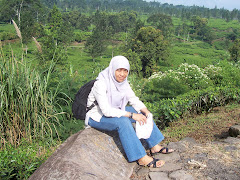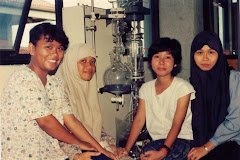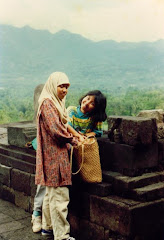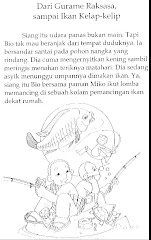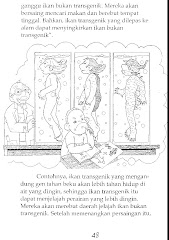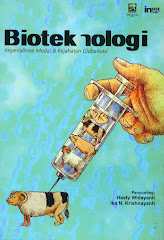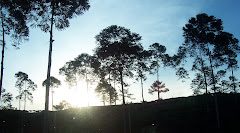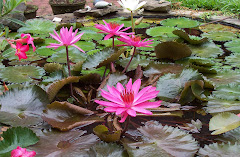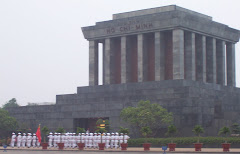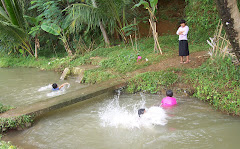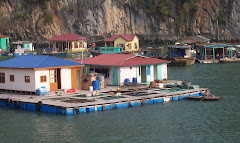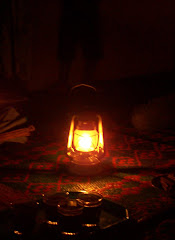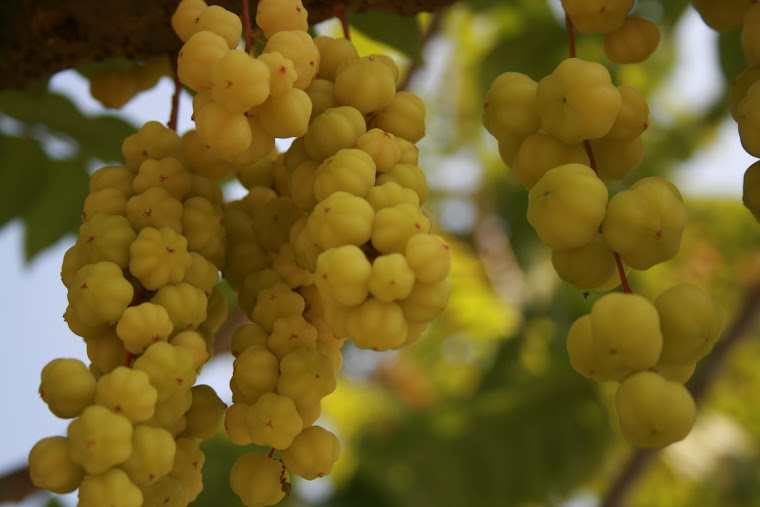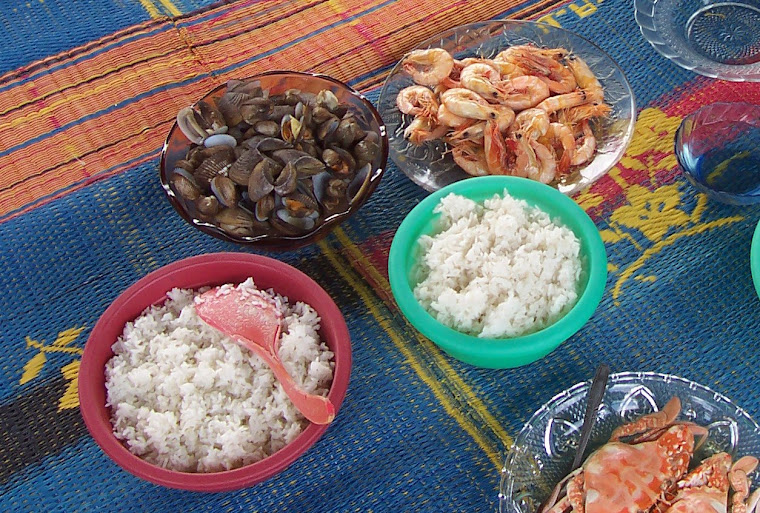Fermented Foods and Drinks of Indonesia
A young French scientist more than 100 years ago found out that fermentation was caused by microorganisms. And he succeeded in determining the microorganisms suited for fermenting wines. The scientist was Louis Pasteur. The discovery of Louis Pasteur was unknown to the older generations here, but from generation to generation Indonesians have familiar with a variety of traditional fermented foods and drinks. Some of them are presented below.
Tempe
If we were to visit homes in Java, we would surely see tempe on every dining table at one time or another. Tempe is already available and its price is relatively cheap. A lot of people, especially among the Javanese, find tempe delicious. Some feel that a meal without tempe is incomplete, other s even lose their appetite if tempe is not served. Tempe can be fried, spiced, or even served as tempe burger.
s even lose their appetite if tempe is not served. Tempe can be fried, spiced, or even served as tempe burger.
Tempe is a cake o fermented soybeans. The processing is traditionally simple. At first soybean are peeled by hand or by threading upon in a filtered basin. The peeled soybeans are mixed with laru and stored for 20 to 24 hours. Laru contains mold fungi such as Rhizopus oligosporus, R. stolonifer, R. oryzae, and R. chlamidosporus, which act as fermentative elements. Another fermentative element often used to produce tempe is usar, contained in waru leaves (Hibiscus tiliaceus).
In Purwokerto and Banyumas, Central Java, there is another kind of tempe made of soybean and fresh ground coconut leavings; it is called tempe bongkrek. But spoiled coconut dregs could be contaminated by bongkrek acid and toxoflavine which might cause death to those who consume this type of tempe. Generally however tempe is a healthy food, high in protein.It is believed to help prevent diarfhea.
Tuak
“Lapo Tuak Bonauli” and “Lapo Tuak Horas” are two small restaurant just a small distance from one another on a busy street in the suburbs of Jakarta. They are often both full of patrons, mostly Batak people from North Sumatra. Some of them singing to the strain of a guitar, others watching chess players, or just chatting with friends and enjoying their drinks. In Jakarta, “Lapo Tuak” is a small Tapanuli, North Sumatra, offering a special kind of alcoholic drink called “tuak” (palm wine).
Tuak is a cream colored liquid tapped from the male flower stalk of aren trees (Arenga pinnata) of the Palmae family. Aren is a multipurpose plant. Practically all its parts are useful: its trunk can be made into furniture, its young leaves can be used as cigarette papers, its black fibers as roofing for houses, or brushes or brooms, and its fruits is delicious miced into fresh fruit or other sweet drinks. In recent years, however, aren trees have been massively cut down for their starch, and they are becoming more and more rare and harder to find. Fortunately, for tuak lovers, coconut trees (Cocos nucifera) can also be tapped to provide liquid for tuak.
The process of making tuak might look rather strange to non-experts. It starts with the choosing of the right flower stalk. The least sour ones are the best. Then, while the flower stalk is swung to and fro, it is continuously struck for at least 15 to 30 minutes, once or twice a day, with a wooden hammer, during a period of 30 to 35 days, in order to facilitate the flow of the liquid out. When all its flowers are blossoming, the flowers are cut off, but the stalk is left at a length of about 40to 60 centimeters. And the edge of the stalk is tapped,and covered with are leaves in such a way that the liquid still drops into the receptacle, usually early in the morning, the liquid is collected. It is then stored in a non feral and non-aluminal jar. A reasonable amount of raru, the fermenting element, is then put inside the jar. A few hours later the liquid of the aren tree had become tuak.
Raru is the skin of a tree which can only be found in Tapanuli and on Nias island, also in North Sumatra. The longer the raru is kept in the tuak the higher the alcoholic rate of the tuak will be. One glass of tuak is Rp.300-Rp.500, an equivalen of US$ 0.35 (price in 1990). Tuak is usually served with the cooked or roasted meat of a dog or pork. Tuak of good quality has about 6 to 10 percent alcohol content. When stored in a bottle or poured into a glass small bubbles appear from the bottom and from a foam on the surface of the tuak.
Tempoyak
It is a kind of food much favored in Palembang, Lampung (the Southern part of Sumatra) and Kalimantan. It is the fermented flesh of durian (Durio zibethinus), a fruit with a pungent smell and taste. The flesh must be ripened durian, otherwise the taste of the tempoyak will be bitter and sour.
To make tempoyak the flesh of the durian is first separated from its seed, and then a reasonable amount of salt is mixed in. It is then stored untouched for three to four weeks, or even longer. The longer the fermentation period the better the quality of the tempoyak will be. Good tempoyak can last for to a year. It is delicious, sweetly sour and salty and it is served as a side dish. It can also be used as a seasoning for various foods, for example, fried fish. Tempoyak is white in color, and looks like paste.
Dadih
Dadih, best known in West and North Sumatra, is a kind of food made of fermented water buffalo milk. Area people usually prefer water buffalo to cow milk, because water buffalo milk makes a solider dadih than cow milk.
In Medan, North Sumatra, however, another kind of water buffalo called murrah (Tubalus bubalis) is milked to make dadih. At present, murrah are rare, and can only be found in Medan. They were brought into Indonesia from India, and bred by the Indians, a tradition handed down from father to son. Murrah differ from the usual water buffalo in size, they are larger and longer. Their horns coil to the back, and they do not wallow in mud holes.
It is very simple to make dadih. The water buffalo milk is put into a bumbung (bamboo cylinder intact at one end, used as a container), 30 centimeters in length. The open end of the bamboo cylinder covered with banana leaves (Musa sp). The milk is kept in the bumbung for 24 hours to let the fermentation process take place. The end product is dadih, brownish-white in color and fishy in odor.
The fermentation process is caused by microscopic organisms such as Lactobacillus plantarum, some Pennisillium, and especially Geotricum candidum, which can produce lipases able to dissolve the high fat content in the milk. Dadih is sold in traditional market place. To make sure of its quality one can lift up the cover of the bumbung and look inside. Usually dadih is seasoned with spices and served as side dish with rice.
Ikan Peda
Salting fish is one way of preserving unsold fresh fish caught from the sea. (to be continued...)
A young French scientist more than 100 years ago found out that fermentation was caused by microorganisms. And he succeeded in determining the microorganisms suited for fermenting wines. The scientist was Louis Pasteur. The discovery of Louis Pasteur was unknown to the older generations here, but from generation to generation Indonesians have familiar with a variety of traditional fermented foods and drinks. Some of them are presented below.
Tempe
If we were to visit homes in Java, we would surely see tempe on every dining table at one time or another. Tempe is already available and its price is relatively cheap. A lot of people, especially among the Javanese, find tempe delicious. Some feel that a meal without tempe is incomplete, other
 s even lose their appetite if tempe is not served. Tempe can be fried, spiced, or even served as tempe burger.
s even lose their appetite if tempe is not served. Tempe can be fried, spiced, or even served as tempe burger.Tempe is a cake o fermented soybeans. The processing is traditionally simple. At first soybean are peeled by hand or by threading upon in a filtered basin. The peeled soybeans are mixed with laru and stored for 20 to 24 hours. Laru contains mold fungi such as Rhizopus oligosporus, R. stolonifer, R. oryzae, and R. chlamidosporus, which act as fermentative elements. Another fermentative element often used to produce tempe is usar, contained in waru leaves (Hibiscus tiliaceus).
In Purwokerto and Banyumas, Central Java, there is another kind of tempe made of soybean and fresh ground coconut leavings; it is called tempe bongkrek. But spoiled coconut dregs could be contaminated by bongkrek acid and toxoflavine which might cause death to those who consume this type of tempe. Generally however tempe is a healthy food, high in protein.It is believed to help prevent diarfhea.
Tuak
“Lapo Tuak Bonauli” and “Lapo Tuak Horas” are two small restaurant just a small distance from one another on a busy street in the suburbs of Jakarta. They are often both full of patrons, mostly Batak people from North Sumatra. Some of them singing to the strain of a guitar, others watching chess players, or just chatting with friends and enjoying their drinks. In Jakarta, “Lapo Tuak” is a small Tapanuli, North Sumatra, offering a special kind of alcoholic drink called “tuak” (palm wine).
Tuak is a cream colored liquid tapped from the male flower stalk of aren trees (Arenga pinnata) of the Palmae family. Aren is a multipurpose plant. Practically all its parts are useful: its trunk can be made into furniture, its young leaves can be used as cigarette papers, its black fibers as roofing for houses, or brushes or brooms, and its fruits is delicious miced into fresh fruit or other sweet drinks. In recent years, however, aren trees have been massively cut down for their starch, and they are becoming more and more rare and harder to find. Fortunately, for tuak lovers, coconut trees (Cocos nucifera) can also be tapped to provide liquid for tuak.
The process of making tuak might look rather strange to non-experts. It starts with the choosing of the right flower stalk. The least sour ones are the best. Then, while the flower stalk is swung to and fro, it is continuously struck for at least 15 to 30 minutes, once or twice a day, with a wooden hammer, during a period of 30 to 35 days, in order to facilitate the flow of the liquid out. When all its flowers are blossoming, the flowers are cut off, but the stalk is left at a length of about 40to 60 centimeters. And the edge of the stalk is tapped,and covered with are leaves in such a way that the liquid still drops into the receptacle, usually early in the morning, the liquid is collected. It is then stored in a non feral and non-aluminal jar. A reasonable amount of raru, the fermenting element, is then put inside the jar. A few hours later the liquid of the aren tree had become tuak.
Raru is the skin of a tree which can only be found in Tapanuli and on Nias island, also in North Sumatra. The longer the raru is kept in the tuak the higher the alcoholic rate of the tuak will be. One glass of tuak is Rp.300-Rp.500, an equivalen of US$ 0.35 (price in 1990). Tuak is usually served with the cooked or roasted meat of a dog or pork. Tuak of good quality has about 6 to 10 percent alcohol content. When stored in a bottle or poured into a glass small bubbles appear from the bottom and from a foam on the surface of the tuak.
Tempoyak
It is a kind of food much favored in Palembang, Lampung (the Southern part of Sumatra) and Kalimantan. It is the fermented flesh of durian (Durio zibethinus), a fruit with a pungent smell and taste. The flesh must be ripened durian, otherwise the taste of the tempoyak will be bitter and sour.
To make tempoyak the flesh of the durian is first separated from its seed, and then a reasonable amount of salt is mixed in. It is then stored untouched for three to four weeks, or even longer. The longer the fermentation period the better the quality of the tempoyak will be. Good tempoyak can last for to a year. It is delicious, sweetly sour and salty and it is served as a side dish. It can also be used as a seasoning for various foods, for example, fried fish. Tempoyak is white in color, and looks like paste.
Dadih
Dadih, best known in West and North Sumatra, is a kind of food made of fermented water buffalo milk. Area people usually prefer water buffalo to cow milk, because water buffalo milk makes a solider dadih than cow milk.
In Medan, North Sumatra, however, another kind of water buffalo called murrah (Tubalus bubalis) is milked to make dadih. At present, murrah are rare, and can only be found in Medan. They were brought into Indonesia from India, and bred by the Indians, a tradition handed down from father to son. Murrah differ from the usual water buffalo in size, they are larger and longer. Their horns coil to the back, and they do not wallow in mud holes.
It is very simple to make dadih. The water buffalo milk is put into a bumbung (bamboo cylinder intact at one end, used as a container), 30 centimeters in length. The open end of the bamboo cylinder covered with banana leaves (Musa sp). The milk is kept in the bumbung for 24 hours to let the fermentation process take place. The end product is dadih, brownish-white in color and fishy in odor.
The fermentation process is caused by microscopic organisms such as Lactobacillus plantarum, some Pennisillium, and especially Geotricum candidum, which can produce lipases able to dissolve the high fat content in the milk. Dadih is sold in traditional market place. To make sure of its quality one can lift up the cover of the bumbung and look inside. Usually dadih is seasoned with spices and served as side dish with rice.
Ikan Peda
Salting fish is one way of preserving unsold fresh fish caught from the sea. (to be continued...)

